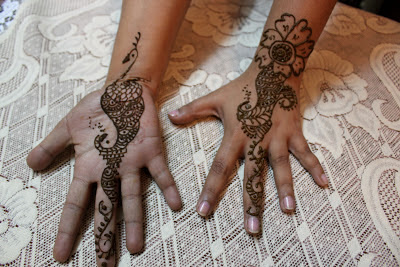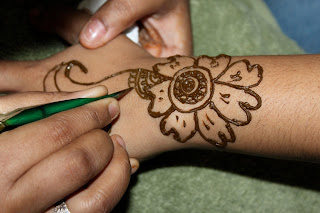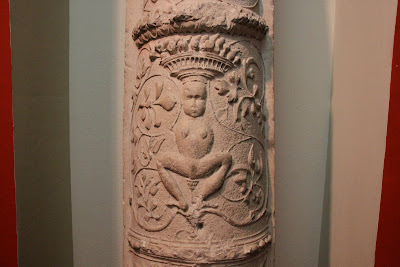Henna-aah - Nature's own body-art ingredient
Deepika Lal holds a cone made of plastic bag, filled with henna paste. Grasping it with artistic perfection, she uses subtle, meticulous strokes to draw out lines on the palm, converging to create an intricate design.
The process, to the bystander, looks more like putting icing on a cake, but Lal is practising the ancient Indian and Middle Eastern art of applying 'Mehndi' (the name for Henna), which, over the years, has become a fashion statement as well as a mystic Eastern charm.
Even after centuries, the rudiments and fundamentals of this art of adornment are based on the skill-set, imagination and creativity of the person applying henna.
"The designs are nature-inspired and, most times, not predetermined," says Priya Anaokar, a veteran in the art of mehndi. "They (design elements) have evolved over the years, but certain elements have never changed."
Traditionally, preparing the henna was a multi-pronged, labour-intensive process, taking several days to a week: from plucking the henna leaves, drying them in the sun, making a paste on an Indian grinding stone, and finally making a thick paste, which was then sieved to get a smooth consistency.
"We get ready-made cones," said Lal, a high-school student who learnt to apply mehndi in Delhi, India, and does this as a hobby. Mehndi is usually applied on the palm of the hand.
"The stain is the best on the thickest part of the skin," informs Anaokar. The skin is first rubbed with a thin coating of Eucalyptus oil, "this is optional, the oil gives some extra sheen, so it's applied," Anaokar said.
Then the mehndi is applied, holding the cone as a pencil grip and squeezing the end gently to release the paste as the pattern is drawn. The peacock, which is also India's national bird, flowers, and mango leaves are some of the most common base designs around which patterns are made.
This design differs slightly from the Middle Eastern variant, where the lines are thicker and simpler. "To make Indian designs, we apply henna in smooth and intricate strokes, while for the Arabic designs, the strokes are thicker and with a free hand," Anaokar informed.
"Once the design is applied, the mehndi is left to be dried out, usually a mixture of lime juice and sugar is dabbed," said Lal. "This gives the stain a rich and deep colour." The coating takes around an hour to leave the desired stain, afterwards it is washed off.
The henna design stays on the skin for one to two weeks.
Borne out of tradition, where intricate designs of mehndi are applied to brides before wedding ceremonies. It is the tool of adornment for the women in the Indian sub-continent and the Middle East. Mehndi has significance in Indian wedding where the bride's hands and feet are decorated with the henna design.
Henna symbolises fertility and the confluence of love between wife and husband. It is an Indian tradition that the bride does not do any work at her in-laws place till the henna fades away. "This is a way to get the new bride accustomed to her new home,"Anaokar said.
In the Caribbean, the mehndi is popular in Trindad and Tobago and Guyana, where there is a high percentage of Indians. Henna, also has cooling properties, and is also applied as an alternative to hair dye by many.
Over the years, the designs have got trendy and tiny crystals are stuck to the designs for added 'oomph'. The henna has since moved from being traditional adornment art to the temporary tattoo, sashaying on the runways of fashion shows and being featured on Hollywood celebrities.
The mehndi is here to stay.
amitabh.sharma@hotmail.com
Published December 9, 2012. The Sunday Gleaner









Comments
Post a Comment